The history of Haus am Waldsee

Haus Knobloch, 1926, today Haus am Waldsee, photo: Käthe Stoef, Hamburg
Surrounded by 250,000 trees Haus am Waldsee is embedded in the lake district between Krumme Lanke and Schlachtensee. Around the year 1900 cattle was still searching for food on the sandy soils of the area. Only the trains from Berlin to Potsdam, hurrying past on the “Stammbahn” of 1838 in intervals of ten minutes, spoiled the idyll. That was until just after the turn of the century when the Berlin banker Adolf Gradenwitz and the Silesian entrepreneur Guido Fürst Henckel von Donnersmarck acquired the lands to the East of what is now the S-Bahn station of Mexikoplatz. Together they founded a land development corporation Zehlendorf-West. In 1903 they produced a masterplan, which provided for 663 building sites that were to be developed along nineteen new streets radiating from the station. At the centre of that area was a boggy fen. Dredged to be the “Waldsee”, it lent an idyllic flair to the building land. The station, too, increased the value of the properties. By then the trains ran at five to ten minute intervals. Before World War I many reform-oriented, well-to-do city dwellers had their villas built by renowned architects like Hermann Muthesius. A life in rural surroundings coupled with the advantages of the metropolis comprised the welcome setting for the dreams of the new elites.
Thirty years later famous architects, such as Hermann Muthesius, Ludwig Mies van der Rohe, Walter Gropius and Bruno Taut, had designed and built a dozen villas and housing complexes around the Waldsee. Among these was “Haus Knobloch”, designed by Max Werner in 1922, which has been used as an exhibition space since 1946 and is called “Haus am Waldsee” both factually and affectionately.
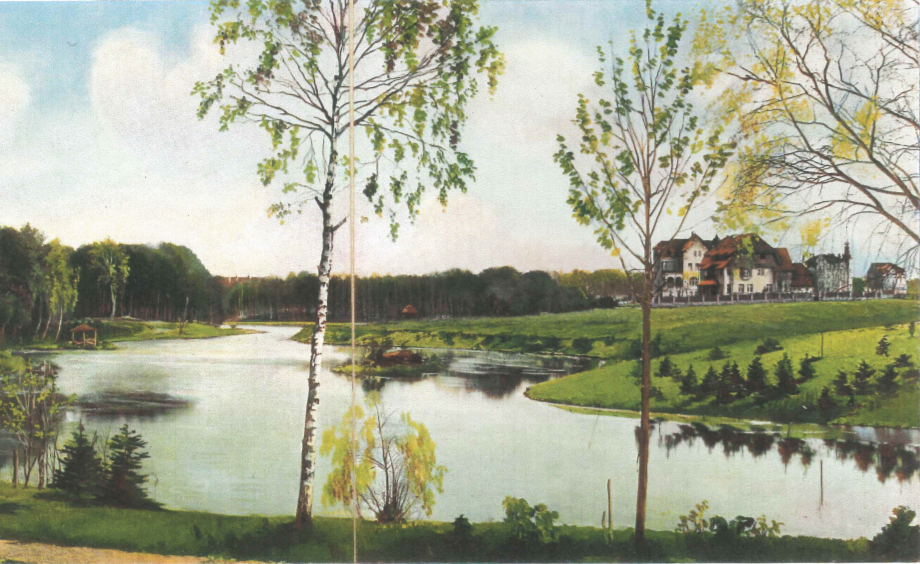
Waldsee around 1910, colour print based on photo by Richard Hoffmann, From: Die Villenkolonie Zehlendorf-West am Grunewald, published by the Zehlendorf-West Terrain-Aktiengesellschaft, Berlin
Life in the golden vegetable garden
The Jewish textile entrepreneur Hermann Knobloch was in his mid-forties when he commissioned a villa in the English country style with the Berlin architect Max Werner, who was of the same age, in 1922. The house was to be large enough for children, guests and cars. Most of all, however, it was to be light-filled. Taking up residency in 1923, the family had a private filling station, a boathouse, a greenhouse, a pigsty, a chicken coop and accommodations for staff members above the garage wing. Self-sufficiency was achieved with the aid of a meadow with scattered fruit trees in the front garden and the plentiful fish stock in the lake as well as several vegetable patches. Paths and terraces were laid out and rare trees and rhododendrons planted among the existing ones.
A grave situation
After four serene years the Knobloch family business encountered financial problems in 1926. In order to save “Knobloch & Rosemann. Herrenbekleidung, Gummimäntel, Fabrikation von Webwaren, Großhandel” they sold their paradise on the lake and moved to Charlottenburg. At some point in the early 1930s, and thus in the nick of time, the family was able to emigrate to Uruguay.
Railway stations as lifelines
By 1945 the property had changed hands eight times. Every successive owner probably used the U-Bahn terminus of Krumme Lanke designed by Alfred Grenander, which was opened in 1929 and to this day provides a fast link between Haus am Waldsee and the city centre. In the days immediately after the end of the Second World War, in the spring of 1945, this lifeline had long been disrupted. The villa was deserted. Its last occupant, Karl Melzer, had been a high-ranking civil servant of the Nazi regime and, as such, had gone to ground in Southern Germany in March 1945. In May 1945 ten Russian soldiers occupied the house. A little later the first green shoots of public cultural life began to stir in the park: in June 1945 the musicians of the Berlin Philharmonics gave only their second concert after the war in the house’s garden. The programme included pieces by Mozart, Haydn and Grieg. The conductor was Walter Sieber. The soloist was the famous soprano Erna Berger of Staatsoper Berlin. Tickets were five marks for a seat and two marks for standing room.
A hunger for the pleasures of art
When the occupation of Zehlendorf changed hands from the Russians to the Americans in the summer of 1945 the garden at Haus am Waldsee hosted not only concerts but also theatre performances. A small delegation including, among others, Gustav Gründgens, Marianne Hoppe and Ilse Werner had spotted the premises at Argentinische Allee 30 and pleaded with the town major to rededicate it as a municipal cultural centre. This was achieved with the first exhibition in January 1946, curated by the artist Ewald Vetter and presenting sculptures by Käthe Kollwitz. Edwin Redslob, art historian and former Reichskunstwart of the Weimar Republic, was clearly impressed by the sculpture entitled Die Klage (the lament). Writing in Der Tagesspiegel, a newspaper he co-founded, he comments: “This work alone makes the pilgrimage to the Kunsthaus Zehlendorf worthwhile, for such creation absolves an entire people.”

William Shakespeare, Ein Sommernachtstraum, open air theatre by the Waldsee, 1949, Photo: Haus am Waldsee
Art in a domestic setting
In 1946 the writer and musicologist Karl Ludwig Skutsch from Breslau becomes the first artistic director of Haus am Waldsee. Determined and courageous, he turns to progressive artists who were ostracised and banned from exhibiting in Nazi Germany. Skutsch begins his programme with a show of Hermann Blumenthal. The artist was killed in Russia in 1942, only thirty-seven years of age. Until 1937 he was deemed one of the most promising talents of the youngest generation of German sculptors. In 1948 the then 64-year-old painter Karl Schmidt-Rottluff is invited for a retrospective.
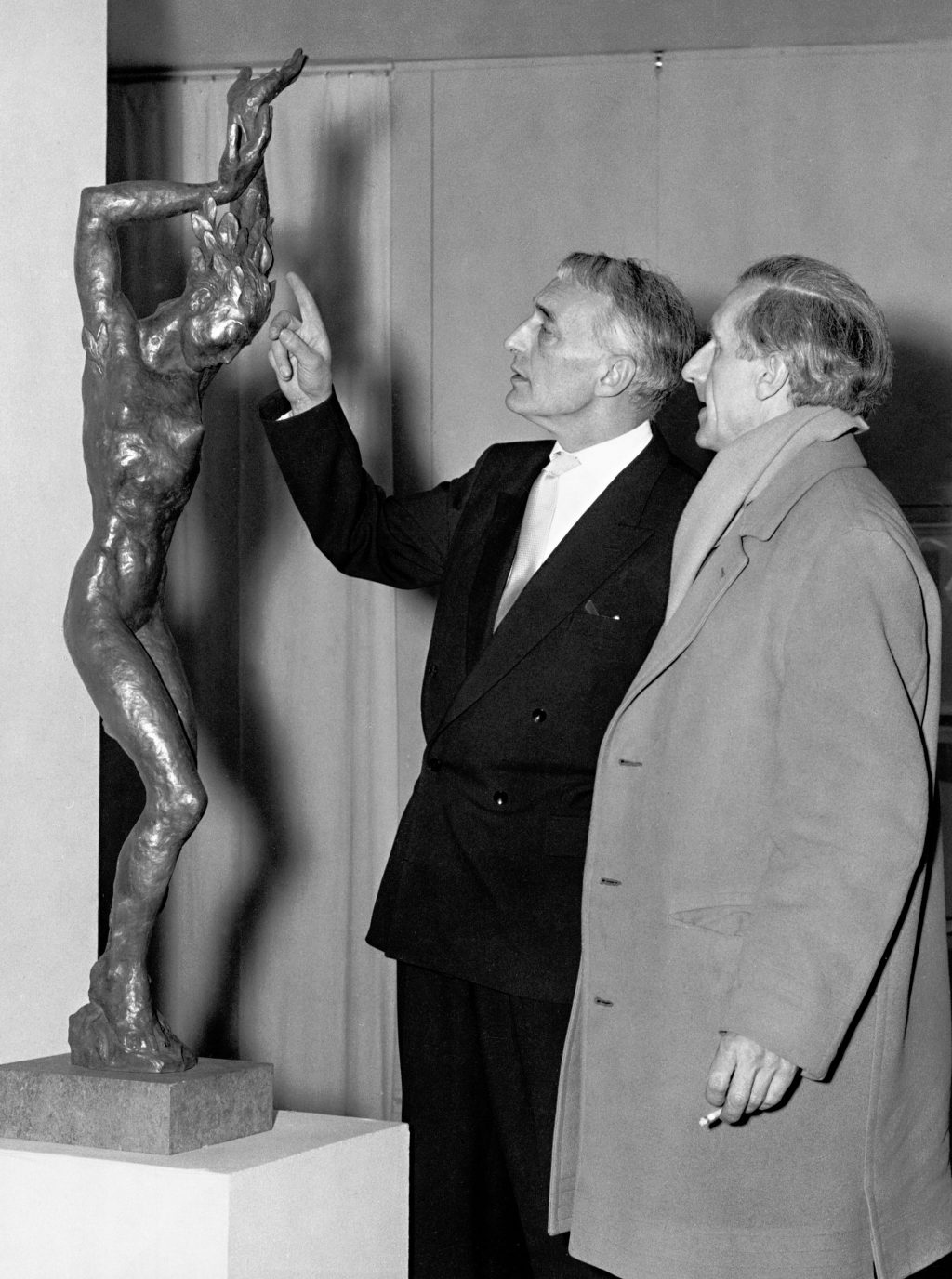
Exhibition Renée Sintenis, left: Karl Ludwig Skutsch, right: Bernhard Heiliger, 1958, photo: Haus am Waldsee
A journey to the better country of art
In the spring of 1949, just after the establishment of the Federal Republic of Germany, Skutsch celebrates his first great popular success: thirty-two painters and sculptors had banded together in the “Berliner Neue Gruppe”. Among them were Max Pechstein, Karl Schmidt-Rottluff, Karl Hofer, Renée Sintenis, Hans Uhlmann, Bernhard Heiliger, Werner Heldt and Alexander Camaro. The art historian Will Grohmann notes in the Tagesspiegel on July 1, 1949: “How much courage the extremists show to keep at it despite economic hardship… The marble head by Hartung, the wire figure by Uhlmann and the large jamb statue by Heiliger are achievements we can be proud of, even abroad.” The curiosity for the new increases further when graphic works by Picasso are shown later that same year. And when, in 1950, Skutsch shows “Chinesische Malerei aus vier Jahrhunderten” (Chinese painting from four centuries) from a private collection nearly 9,000 visitors make the pilgrimage to the house in Zehlendorf in only six weeks. Grohmann sums up: “Haus am Waldsee is a good setting… and in summer it is a welcoming place for a journey to the better country of art.”
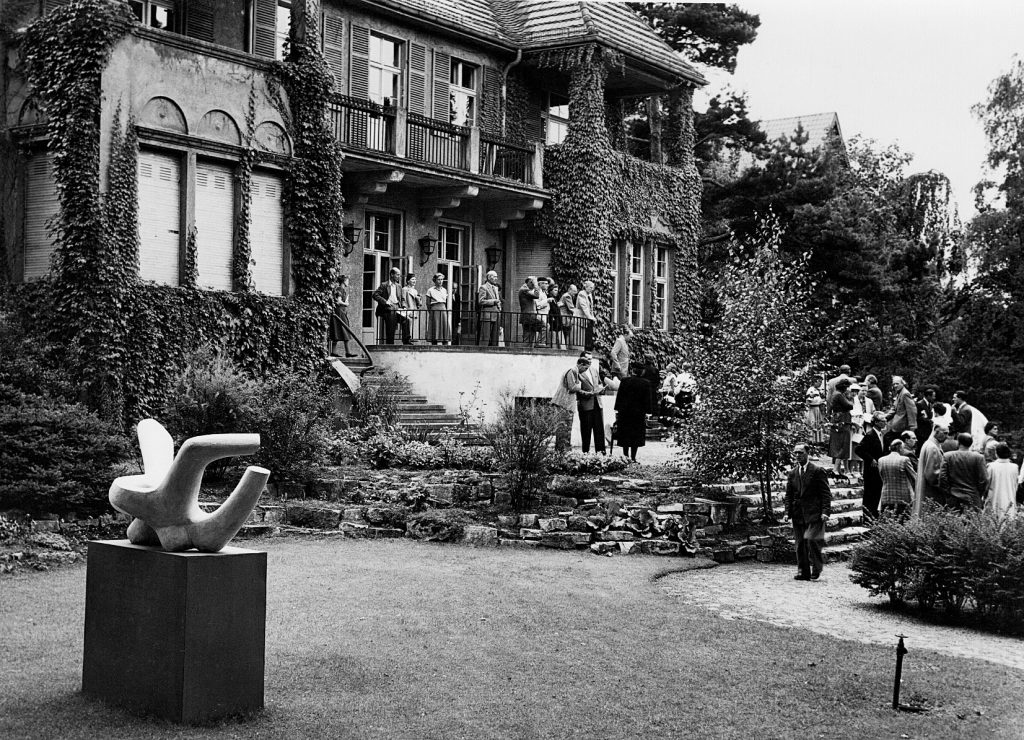
Exhibition Karl Hartung, 1952, photo: Haus am Waldsee
International greats exhibit at the Haus am Waldsee
In the 1950s, Skutsch was able to present artists of international standing in major solo exhibitions: Henry Moore, Max Ernst, Ernst Wilhelm Nay, Karl Hartung, Ernst Ludwig Kirchner, Juan Miró, Georges Braque, Willi Baumeister, Hans Hartung, Wilhelm Lehmbruck and Renée Sintenis. There was a constant coming and going of major figures of the new art scene at the Waldsee. Skutsch’ greatest success, however, was a show that travelled from Cologne in 1955: “Moderne Meister aus dem Wallraf-Richartz-Museum”. Josef Haubrich had made a gift of his private collection of Expressionist paintings to the Cologne museum a short time previously. On the road between 1955 and 1957 it travelled, its Berlin stop-over was Haus am Waldsee.
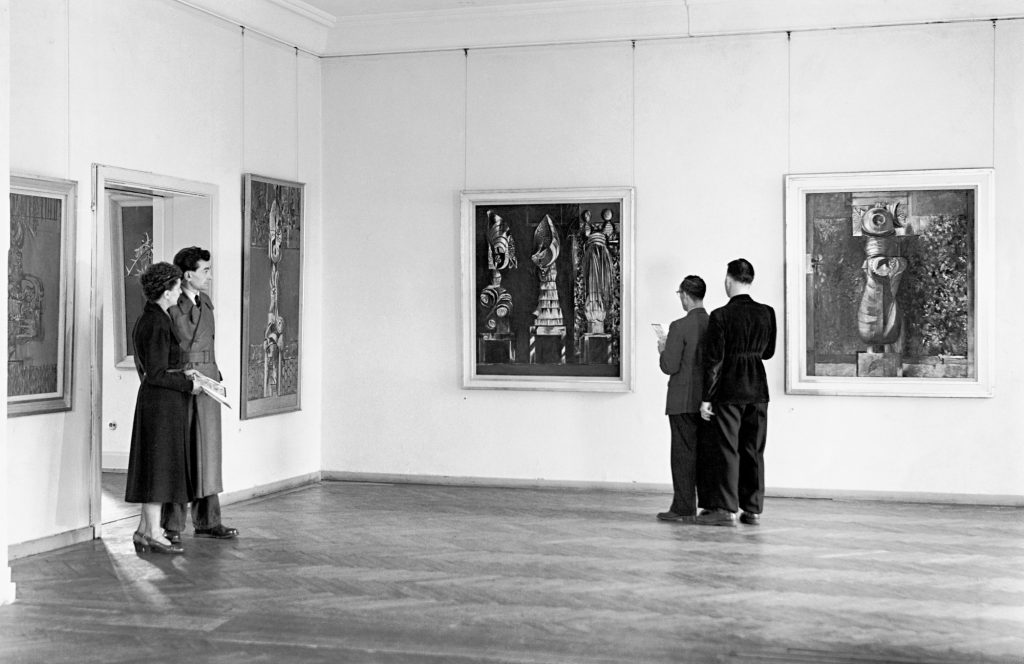
Exhibition Alexander Camaro, 1951, photo: Hellmuth Pollaczek, Berlin-Schöneberg
Sudden change
After the unexpected death of Karl Ludwig Skutsch during a kidney operation in the summer of 1958, the artist and art historian Eberhard Marx (1914–1995) takes over the directorship of Haus am Waldsee at short notice. To begin with he shows two older painters, who died in 1932 and 1941, respectively: the late-Impressionist Max Slevogt and the German-Russian painter Alexej von Jawlensky. Subsequently, he brings two young British sculptors to Berlin: Lynn Chadwick and Kenneth Armitage. And finally Marx captures the audience’s imagination with a survey of the painting of “Neue Sachlichkeit” (New Objectivity) before he leaves his post in 1961 to become director of Städtische Kunstsammlungen in Bonn. He passes the baton of the directorship to the 27-year-old art historian and Sinologist Manfred de la Motte. Having completed an internship at Stedelijk Museum in Amsterdam and taken a turn at director of exhibitions at Kunsthalle Baden-Baden de la Motte initiates a decidedly contemporary programme. “Skripturale Malerei” (scriptural painting) as well as solo shows of Fred Thieler and Otto Herbert Hajek show him to be both at the height of his time and not averse to laying down markers.
Patience and perseverance
The two impromptu directors, Eberhard Marx and Manfred de la Motte, are followed by Thomas Kempas, who has a degree in theatre studies and German language and literature. For thirty years he skilfully keeps the audience in suspense with international exhibitions and jazz concerts: Henri Laurens, Andy Warhol, “Japonismus in der Malerei und Graphik des 19. Jahrhunderts” (Japonism in nineteenth century painting and graphic art), Walter Leistikow and Marianne von Werefkin all had highly successful exhibitions. The 1980 show “Heftige Malerei” (vehement painting) sees Kempas bring off a particular coup: from that moment on the participating artists are known under the moniker “Neue Wilde” (Neo-expressionism).
Uncertainties
Reunification of the two German states in 1989 leads to a substantial increase in the number of exhibition venues for contemporary art in Berlin. Nevertheless Haus am Waldsee continues to hold its own. Retrospectives of Duane Hanson and Dieter Kriester follow before Thomas Kempas retires in the summer of 1994. In the following decade the then 40-year-old art historian Barbara Straka takes over as director at Haus am Waldsee, the first woman to hold the job. Her area of interest is primarily Eastern European contemporary art. However, she also presents exhibitions on the subject of Gerhard Richter’s editions, contemporary Japanese art, Friedrich Nietzsche and Walter Benjamin. The expanded field of the Berlin art scene finds itself in the grip of austerity politics by the Berlin Senate. The number of visitors declines. Against this background some members of the friends and supporters association initiate a change in the operational form of Haus am Waldsee in 2004. Legally responsible for the house is now a private supporting association, which receives financial support from the city as well as the borough.
International art in Berlin
After being vacant for eight months the job of director finally goes to the art historian Katja Blomberg, who takes up the reigns on February 1, 2005. Her stated aim is to invite the multitude of internationally acclaimed artists living in Berlin. Under the question “How does the new enter the world?” the spectrum encompasses the visual arts, design, architecture, sound and photography. On the occasion of the 60th anniversary of the house in 2006 the show “Anstoss Berlin – Kunst macht Welt” (kick-off Berlin – art makes world) succeeds in presenting a survey of the new art scene for the first time. Sixty artists, including big names like Olafur Eliasson, Ayse Erkmen, Tacita Dean, Katharina Grosse, Anri Sala and Tino Sehgal exhibit new works. This renders visible to the public the new international network now existing in Berlin.
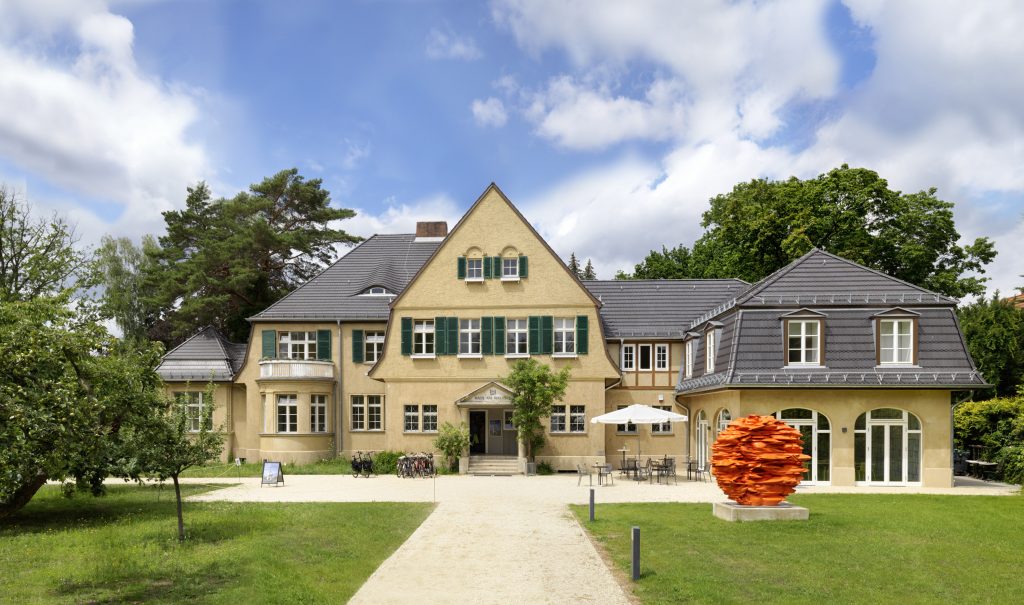
Haus am Waldsee, 2019, photo: Bernd Borchardt
Expansion into the open
The ensuing exhibition programme repeatedly draws on the artist pool of “Anstoss Berlin”. Participating artists, such as Jonathan Monk, Norbert Bisky, Olav Christopher Jenssen, Via Lewandowsky, Corinne Wasmuth, Marcel van Eeden, Björn Melhus, Frank Nitsche, are presented in solo exhibitions. In parallel, a sculpture park is growing with varying works by, among others, Tony Cragg, Wilhelm Mundt, Michael Beutler, Michael Sailstorfer and Thomas Rentmeister. Moreover, designers like Werner Aisslinger, architects such as Jürgen Mayer H, Graft or Haus Rucker&Co. and fashion designers like Lisa D are put up for debate both inside the house and in the outdoor area.
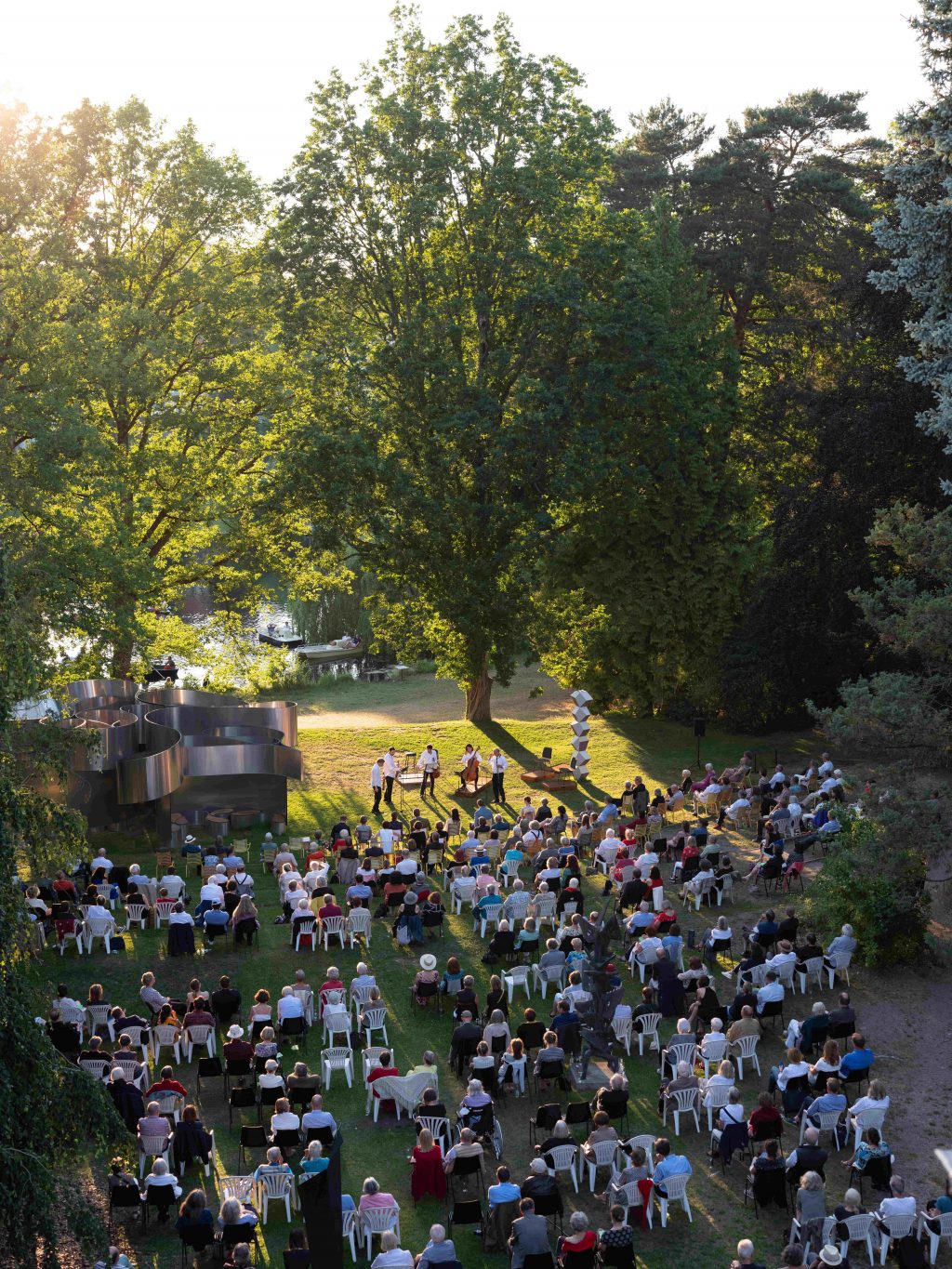
Anniversary Concert for 75 years of Haus am Waldsee, Scharoun Ensemble and Members of the Karajan Academy of the Berliner Philharmoniker, photo: Julian Röder
Changes after 16 years
In September 2021, Katja Blomberg ends her occupation as director of Haus am Waldsee. With passion, perseverance and a clear vision, she has helped Haus am Waldsee to regain its radiance in a short period of time. In addition to the numerous exhibitions of contemporary art, with a strong focus on artists living in Berlin, she has opened up unusual, exciting thematic fields for the house by reflecting on new developments in architecture, design and music through highly acclaimed exhibitions. Last but not least, she has ensured that the Haus am Waldsee was completely renovated in 2017 and 2018 and technically brought up to date. The sculpture park of the house will also be carefully redesigned until 2022 in keeping with its status as a listed monument. Thanks to her outstanding work, Berlin’s oldest exhibition house for contemporary art is well prepared to open up the next chapter.

